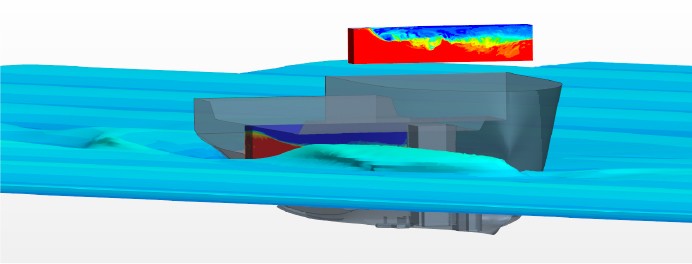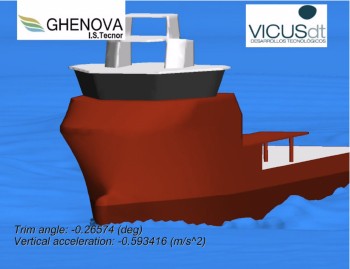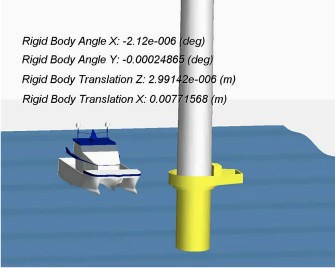Ship propulsion engineering
We’ll be pleased to answer your questions
Seakeeping Analysis



Ships operate in real sea state, not always in still water conditions. Therefore, it is essential for the ship hull to be evaluated dealing with incoming waves from every direction. CFD tools allow us an accurate analysis of the seakeeping abilities of a ship. The model features six degrees of freedom and considers the ship mass and inertia on each axis for a more precise simulation.
Ship model and sea conditions for analysis
Frequency or Time domain simulation
Ship response
Seakeeping
Some typical CFD seakeeping calculations are:
- RAO’s: response amplitude operators
- Angular and linear accelerations for six degrees of freedom calculated in any point of the vessel
- Ship behaviour in the vicinity of an offshore structure (windmill, platform…)
- Bilge keel design and roll damping analysis
- Parametric Rolling
Wave
added resistance
The increase of ship resistance due to waves is calculated by means of CFD. The amount of additional power required for sailing at a certain speed is evaluated compared to the case of calm water. With this information, the sea margin can be evaluated based on a realistic assumption and considering the expected sea state. The added resistance due to waves is one of the merit figures considered when we optimize the hull . These results can be used for a weather routing system.
Sloshing and stabilizer tanks
The motion of a fluid inside a tank of any size can be coupled with the own ship motion, in such a way that sloshing problems can be addressed, this is a typical problem on gas carriers. This approach is also used to analyse stabilizer tanks, sizing and location.
Green water
By means of CFD, water ingress on deck known as “Green water” can be evaluated as a function of time, knowing probabilities of green water on a certain speed, course and sea state combination.
Slamming
Slamming impacts can be calculated by CFD and used for structural evaluation of the fore body or comfort assessment.

